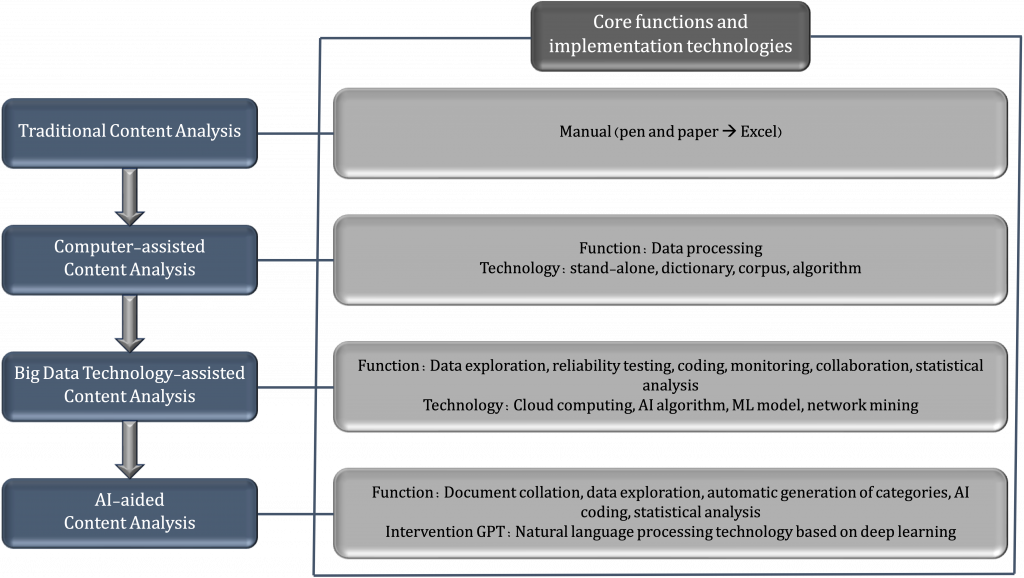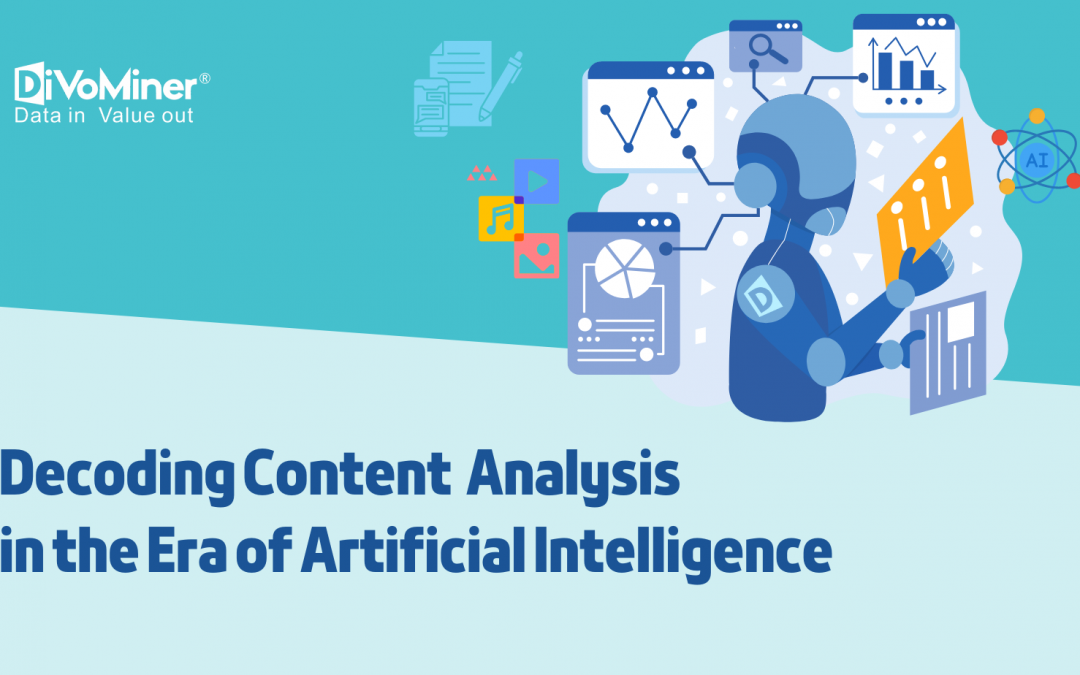Content analysis, a classic research method in the social sciences, has evolved over the past century and found widespread application in various disciplines. With the advent of big data and the rise of artificial intelligence (AI), content analysis has undergone significant transformations. In this blog post, we will explore the technological evolution of content analysis methods and discuss how AI-aided content analysis operates in the new era.
The Evolution of Content Analysis Methods
Content analysis has adapted to different data forms and processing needs throughout its development. It has progressed through four main stages: traditional content analysis, computer-assisted content analysis, big data technology-assisted content analysis, and AI-aided content analysis. While the theoretical foundation of traditional content analysis remains relevant, cutting-edge AI and computer technology are now utilized to cover, measure, and explain important dimensions of data.

Leveraging AI for In-depth Text Data Analysis
AI-aided content analysis can transform unstructured content into structured data, enabling researchers to mine and interpret text data efficiently. By employing automated algorithms and deep learning technologies, AI can discover patterns and characteristics in large-scale data. Through crossover, clustering, and other methods, AI assists in explaining differences and relationships between variables, yielding in-depth analysis results and answering research questions.

The Operating Mechanism of AI-aided Content Analysis
The process of AI-aided content analysis begins with massive data collection and structuring. It integrates online and offline data sources and employs automated methods such as network mining and semantic network analysis. AI-powered deep learning algorithms aid in identifying unknown rules and conducting preliminary data exploration. Researchers then utilize a variety of online content analysis methods, including manual coding, machine coding, and AI coding, to conduct classification and analysis of text content. Statistical analysis methods are applied to derive meaningful insights and address research hypotheses.
Reshaping the Relationship Between Researchers and Technology
AI technology disrupts traditional content analysis methods and reshapes the relationship between researchers and technology. With advancements in AI, researchers can benefit from automated literature research, database establishment, rapid sampling, category construction, coding work, statistical analysis, and visual presentation. By leveraging AI assistance, researchers can focus more on critical thinking and higher-level analysis, freeing themselves from repetitive and time-consuming tasks.
Anticipating Challenges and Opportunities
The integration of AI into content analysis raises crucial considerations. How can we strike the right balance between technology and human involvement in research? How do we define the respective contributions of humans and AI in the operational process? While AI enhances efficiency and productivity, it also evokes concerns and anxieties.
Embracing the need for adaptation, the DiVoMiner® team actively recognizes and embraces new technologies while finding a balance between researchers and technology.

Excitingly, with the support of OpenAI, the DiVoMiner® platform has officially introduced the revolutionary “AI-generated category” feature. By simply clicking on “AI-generated category”, entering your research objectives, and initiating the generation process, the AI will produce a comprehensive set of categories for researchers to reference. Additionally, the “Import category” function enables seamless integration of these categories into your research category table with just a single click, eliminating the laborious manual input process.
Through this technological advancement, the DiVoMiner® platform empowers researchers by streamlining and automating certain aspects of content analysis, allowing them to focus on higher-level analysis and critical thinking. By harnessing AI’s capabilities, the platform enhances research efficiency and minimizes mundane tasks, leading to more impactful and insightful outcomes.
As we navigate these transformative changes, it is crucial to embrace AI while upholding human control and accountability. Researchers should actively participate in defining the role of AI in the research process, ensuring transparency, ethical practices, and the responsible use of technology.
